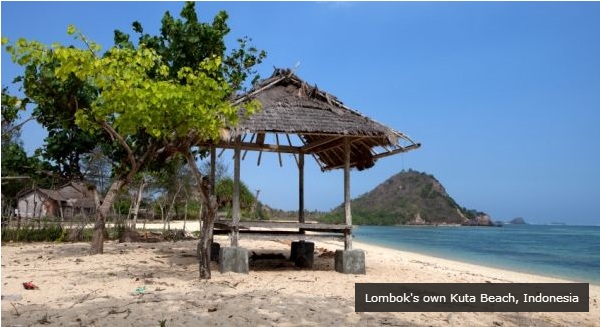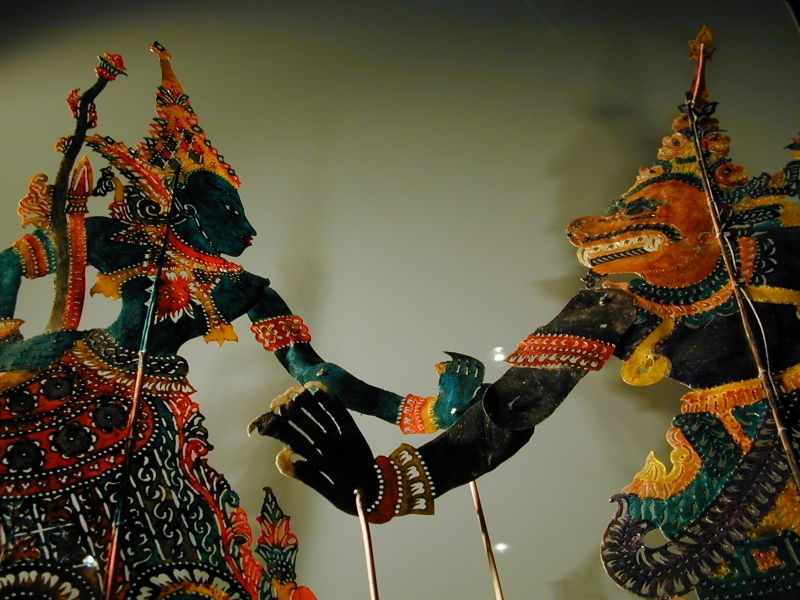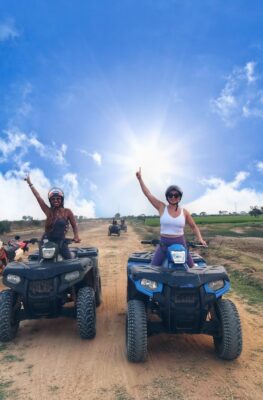Published on April 20, 2010

The opening riff of Steppenwolf’s “Born to Be Wild” is on repeat in my mental iPod as palm trees blur by, brilliant green against a tropical sky. I’m trying to remember the words to the second verse as my motorcycle speeds up the scenic coastal road on my way to Indonesia’s Lombok Island. Sure, a critic might point out that this anthem of the open road goes with a Harley—not the little 100cc Honda Wave I’m zinging along with—but as I turn my head towards the endless miles of sandy beaches and perfect waves, I don’t see any critics around. My brother and our friends Edi and Matt are beatin’ the Bali crowds by taking the local ferry to nearby Lombok, the island located just to the east of Bali but a world away in its culture and people. We decided to bring our own transportation, and although it’s going to take longer than catching one of the short inter-island flights that ferry most tourists between the two islands, I’m already thinking that the journey itself will be half the fun—road trip!
We’re a few hours into the trip and already the sun is setting behind Bali as the ferry chugs along, leaving a white trail of foamy wake to trace our path across the cobalt sea. Brilliant shades of orange and yellow reflect from the misty clouds overhead. If I squint my eyes I think I can just about see Padangbai, the quiet port where we drove our bikes on to the boat in the heat of the midafternoon sun.
After five hours of steaming across the Indian Ocean, our ferry belts out a sonorous horn, announcing its arrival to the port of Senggigi in Lombok like the rumbling of an enormous elephant. The boat has hardly stopped before the ramp is lowered and we’re back on our bikes, hitting the open road as the last light of the day glows red against the skyline of rolling hills surrounding us.
We still have two hours of driving ahead of us before we’ll reach Kuta beach, where we’ll be staying tonight. And while it may share the same name as Bali’s most famous and heavily-touristed stretch of sand and sea, that’s where the comparison ends. Lombok’s Kuta is nearly deserted. Instead of being surrounded by dense lanes of t-shirt stands and trinket shops, this small community is isolated by endless expanses of rice fields punctuated by tiny villages where sometimes the only clue that anyone lives there is the wailing cry from the minaret of the local mosque.
The next morning I wake up feeling already more relaxed. The dust from the road trip was washed off last night in a hot shower and as I walk along the shaded path towards the dining room of our resort the only sounds are the wind through the palms and rolling waves pounding the white coral sands of the beach nearby.
After breakfast we’re back on the bikes for a short trip to Seger Beach (pronounced like ‘Shy-gerr’), about two kilometers from the center of Kuta. We could have taken one of the local horse-drawn pedicabs that are commonly found clip-clopping along the roads of Lombok,but I have to admit we were congratulating ourselves once again for bringing our own rides for the trip—it’s just so much easier to get around!
As we make our way to the beach, small warung (family-owned) restaurants and guest houses of Kuta give way to a winding road lined with towering outcrops of volcanic rock and palm trees, but not another person to be seen. The beach itself is completely deserted, a wide strip of ivory-colored coral sand with each grain worn perfectly round from the surf. A large cliff looms above the famous surf break here. The view from the top of the cliff is spectacular—a panoramic expanse of Indian Ocean, perfectly-formed waves, and small island outcrops.
After a few hours of swimming and surfing at Seger, it’s time for lunch and again we’re back on the open road. This time we traverse the Kuta coastal road through the village and up a steep volcanic hillside to reach Astari, a mostly vegetarian restaurant with the best view in town.
Perched atop one of the steep hills overlooking the scenic Teluk Kuta, the restaurant has so much ambience that our quick stop for a bite to eat turns into a relaxing afternoon of reading and just relaxing with the view. Later in the afternoon we’ll take the trip to Mawi beach, about 45 minutes by motorcycle from Kuta. It’s yet another quiet and deserted stretch of island life perfected.
With three days of beach, sun, waves, and motorcycling behind us, this is starting to feel like a great routine. As we are leaving Lombok on our bikes, it’s nice to think we found the open road to paradise. And even better, we brought our own wheels!
Insight
The Sasak People of Lombok
Lombok is often advertised to tourists visiting Indonesia as a version of Bali without the crowds. It can certainly feel that way when you first arrive in port or touch down on the runway—there’s no doubt the island is a lot less populated. And with a similar volcanic topography, Lombok really does look a lot like Bali in many places. The local Sasak and Balinese people even share a common language and ancestry, but from here the comparison is a bit more complex.
The cultures of the two islands really are different. Most noticeably missing on Lombok are the intricately carved Hindu temples of Bali. Here, they are replaced with towering minarets and domed mosques because the majority of the population is Muslim. The pace of Lombok life also seems slower, and the people quite a bit more reserved than the Balinese. For some visitors used to an outgoing Balinese person this can seem unfriendly, but in truth they are just a little more cautious when meeting strangers. But after spending some time with the locals, you’ll likely find they are every bit as friendly and generous as the Balinese.
Go
• From Jakarta, there are several flights going to Bali. Lombok is reachable via the ferry from Padangbai, north of Sanur on Bali’s well-maintained coastal highway. The boats leave approximately every hour, but plan on the potential for a short wait in port if you miss the previous ferry.
Stay
• Good bets for places to stay include Rinjani Bungalows (tel. +62 370 654849), the Surfer’s Inn (http://www.lombok-surfersinn.com/), and G’Day Inn (tel. +62 370 655432).
Click
• http://www.lombok-network.com

Centuries before the bootleg DVD shops sprang up around Indonesia’s tourist spots, the traditional Wayan kulit (shadow puppetry) shows were the only form of cinema in town. Drawing on ancient stories, the shows tell familiar morality tales about the struggle between good and evil. And even if you can’t understand the Balinese dialect used by the dalang (puppet master and storyteller) the characters are always the same with recognizable roles. Typically the story unfolds after sunset with the flickering light of an oil lamp casting a glow on the stage. The puppets are handcut from a piece of buffalo hide and intricately painted. Nearly all are made in Puaya, south of Ubud. Nightly performances are held in Ubud, though the shows have been shortened for visiting audiences—a traditional show will usually last the whole night!
PAL flies between Manila and Jakarta daily. For more information, call PAL reservations office (+632 855 8888 and +632 855 7777) or log on to http://www.philippineairlines.com.
This article was provided by Philippine Airlines’ Mabuhay Magazine.Mabuhay Magazine is published by Eastgate Publishing Corporation (email:info@eastgatepublishing.com;website: http://www.eastgatepublishing.com).






